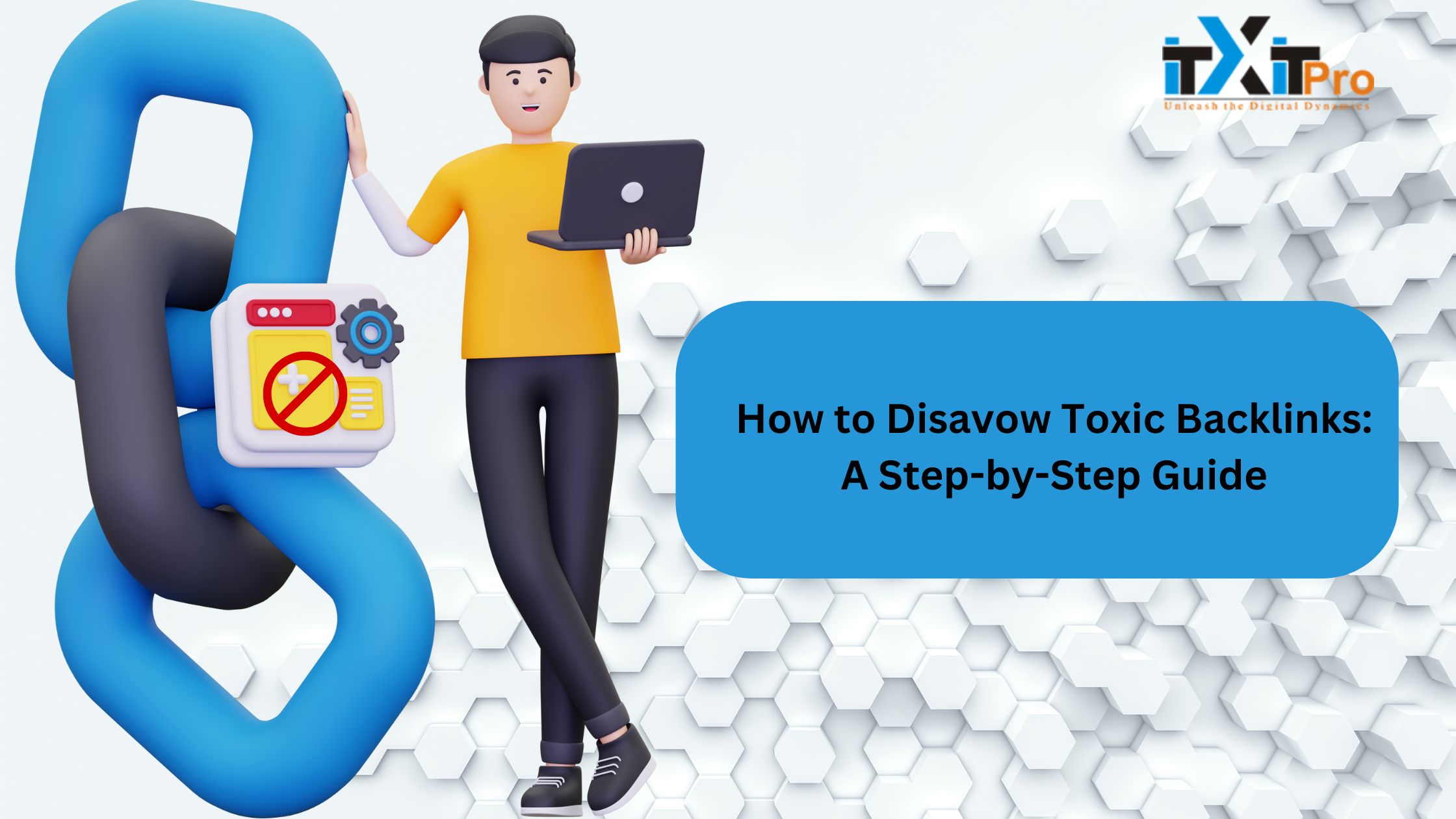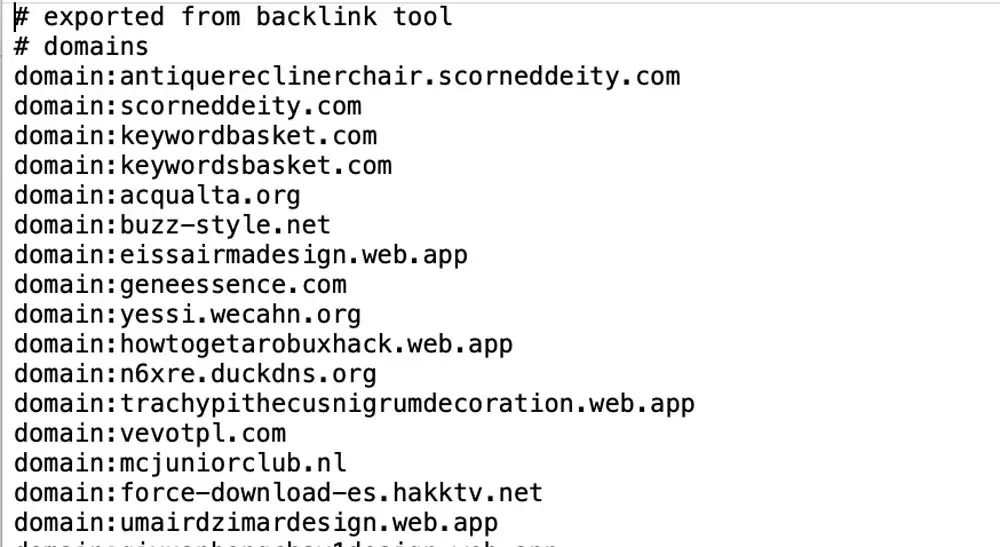Introduction

Backlinks play a crucial role in SEO, helping improve your website’s credibility and ranking on search engines. However, not all backlinks are created equal. While some backlinks can help your site rank higher, others—known as toxic backlinks—can damage your SEO efforts and hurt your site’s reputation. Suppose you’re a website owner or handling SEO for a client. In that case, it’s essential to understand what toxic backlinks are and how to remove them to maintain a healthy website.
Understanding Toxic Backlinks and Why They Matter for SEO
Backlinks, or incoming links to your website, are considered one of the top ranking factors by Google. But not all backlinks contribute positively. Toxic backlinks are those that come from low-quality, spammy, or irrelevant websites. These harmful links can trigger penalties from Google, negatively impact your site’s ranking, and even lead to manual penalties.
Toxic backlinks often stem from black-hat SEO techniques such as link farms, paid link schemes, or other unnatural link-building tactics. SEO experts need to monitor backlinks regularly to avoid being penalized by Google.
What Defines a Toxic Backlink?
Toxic backlinks can have various characteristics. Here’s what to look out for:
- Links from Irrelevant Sites: Links that come from websites not related to your industry or niche.
- Paid Links: Links that are part of a paid link scheme or any link that violates Google’s guidelines.
- Spammy Websites: Links from websites that are known for spam, low-quality content, or excessive ads.
- Link Farms: Websites designed solely to link to other sites in exchange for money or services.
- Hidden or Cloaked Links: Links embedded in a way that they are not visible to users but still detected by search engines.
- Exact Match Anchors: Links that use keyword-heavy anchor text rather than natural, varied phrases.
- Links from Low-Quality Directories: Sites that are considered poor sources of links, often with little to no editorial control.
These toxic backlinks can severely harm your site’s SEO and can even get you penalized by Google.
When Should You Disavow Backlinks?
You should only consider disavowing backlinks in certain circumstances. The Google Disavow tool is powerful but delicate and should be used only as a last resort to disavow toxic backlinks. Use the Disavow tool in the following cases:
- Manual Penalty: If you’ve received a manual penalty from Google due to unnatural backlinks.
- Link-building Penalty: If you’ve engaged in link-building practices that violate Google’s guidelines.
- Irrelevant or Spammy Links: If you’ve identified a large number of toxic backlinks pointing to your site and manual removal is not an option,.
Remember, disavowing backlinks should not be the first step. It’s always best to attempt to remove spammy links manually by contacting webmasters or using link removal tools before resorting to the Disavow tool.
How to Disavow Toxic Backlinks: A Step-by-Step Guide
If you’ve identified toxic backlinks that cannot be manually removed, the Google Disavow tool can help you inform Google about the unwanted links and help to disavow toxic backlinks. Here’s how to use it effectively:
Step 1: Identify the Toxic Backlinks
Use backlink analysis tools like Ahrefs, SEMrush, or Google Search Console to identify which backlinks are harmful to your website’s SEO. Create a list of URLs or domains that need to be disavowed.
Step 2: Create a Disavow File
Prepare a .txt file containing the URLs or domains to disavow. The file should be formatted as follows:

Each line should contain either a domain or URL you want to disavow, and you can add comments starting with a #.
Step 3: Upload the Disavow File
Go to Google Search Console and choose your website property. Then, upload the disavow file you created in the previous step.
Step 4: Submit the File and Wait
After uploading the file, submit it. Google may take some time to process the disavow request, so be patient. It may take weeks before you see any changes in your search rankings.
Step 5: Monitor the Results
Keep a close eye on your backlink profile and search rankings. Ensure the toxic links are no longer affecting your site, and monitor any changes in performance. Continue to clean up your link profile as needed.
Common Mistakes to Avoid When Disavowing Backlinks
While using the Google Disavow tool can be helpful, it’s essential to avoid some common mistakes that could hurt your website:
Disavowing Good Quality Links
Never disavow a link without confirming it’s toxic. Disavowing legitimate, high-quality backlinks can harm your site’s SEO.
Disavowing Entire Domains Without Proper Evaluation
Sometimes, a domain may have both good and bad backlinks. It’s essential to evaluate each disavowed toxic backlink individually before deciding to disavow the entire domain.
Using Disavow Too Frequently
Disavowing backlinks should be a last resort. Use it sparingly, only after attempting manual removal of toxic links.
Using Incorrect File Formats
Make sure your disavow file is in the correct .txt format with proper syntax. Errors in the file can result in it being ignored by Google.
Disavowing Too Many Links at Once
Disavow links gradually, especially if you’re unsure about the quality of the links you’re disavowing. Removing too many links at once may look suspicious to Google.
Conclusion: Protect Your Website from Toxic Backlinks
Toxic backlinks are a serious threat to your website’s SEO performance. Regularly audit your backlinks to ensure you’re not linking to low-quality or spammy sites. If you encounter toxic links, try to remove them manually, but use the Google Disavow tool as a last resort for disavowing toxic backlinks.
At ITX IT Pro, we understand the importance of maintaining a clean and healthy backlink profile. Our team of SEO experts can help you identify and remove toxic backlinks, improve your site’s authority, and ensure you follow the best SEO practices. If you need assistance with backlink audits or managing your site’s SEO, reach out to us today!















